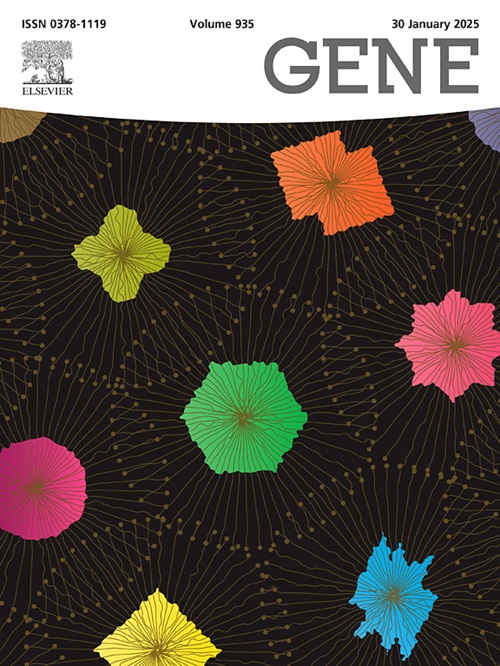Transcriptome analysis and lncRNA expression profile in brain tissues of neonatal hypoxic-ischemic brain damage rat model
IF 2.6
3区 生物学
Q2 GENETICS & HEREDITY
引用次数: 0
Abstract
Background and Objective
Neonatal hypoxic-ischemic encephalopathy (HIE) remains a critical challenge in perinatal medicine. This study aimed to elucidate the transcriptomic landscape, focusing on long non-coding RNAs (lncRNAs) expression patterns in the brain tissues of a neonatal rat model of HIE.
Methodology
We employed a modified Rice-Vannucci model to induce HIE in postnatal day 4 (P4) rats. The experimental groups were subjected to either 5 or 7 min of hypoxia (0 % O2, 100 % N2), while control animals were exposed to normoxic conditions.
Results
RNA sequencing revealed a complex transcriptomic landscape in HIE brains, with approximately 80 million differentially expressed lncRNAs compared to controls. ELISA results demonstrated a significant upregulation of pro-inflammatory cytokines (IL-1β, IL-6, TNF-α) and a concomitant decrease in anti-inflammatory IL-10 levels in brain tissue of HIE rats. qRT-PCR analysis revealed aberrant expression of several miRNAs. Biochemical assays indicated a marked reduction in superoxide dismutase (SOD) activity and an increase in malondialdehyde (MDA) content in HIE brain tissues.
Conclusions
This study highlights the potential regulatory roles of lncRNAs in HIE brains. The intricate interplay between lncRNAs, miRNAs, and mRNAs and alterations in inflammatory and oxidative stress markers suggests a complex regulatory network governing HIE pathogenesis.
新生儿缺氧缺血性脑损伤大鼠模型脑组织转录组分析及lncRNA表达谱。
背景与目的:新生儿缺氧缺血性脑病(HIE)仍然是围产期医学的一个重大挑战。本研究旨在阐明转录组学景观,重点研究长链非编码rna (lncRNAs)在新生儿HIE大鼠模型脑组织中的表达模式。方法:采用改良Rice-Vannucci模型诱导出生第4天(P4)大鼠HIE。实验组分别接受5或7 min的缺氧(0 % O2, 100 % N2),而对照组则暴露于正常的缺氧条件下。结果:RNA测序揭示了HIE大脑中复杂的转录组景观,与对照组相比,大约有8000万个差异表达的lncrna。ELISA结果显示,HIE大鼠脑组织中促炎细胞因子(IL-1β、IL-6、TNF-α)显著上调,同时抗炎IL-10水平降低。qRT-PCR分析显示多个mirna表达异常。生化分析表明,HIE脑组织中超氧化物歧化酶(SOD)活性显著降低,丙二醛(MDA)含量显著增加。结论:本研究强调了lncrna在HIE脑中的潜在调节作用。lncRNAs、miRNAs和mrna之间复杂的相互作用以及炎症和氧化应激标志物的改变表明,HIE的发病机制存在复杂的调控网络。
本文章由计算机程序翻译,如有差异,请以英文原文为准。
求助全文
约1分钟内获得全文
求助全文
来源期刊

Gene
生物-遗传学
CiteScore
6.10
自引率
2.90%
发文量
718
审稿时长
42 days
期刊介绍:
Gene publishes papers that focus on the regulation, expression, function and evolution of genes in all biological contexts, including all prokaryotic and eukaryotic organisms, as well as viruses.
 求助内容:
求助内容: 应助结果提醒方式:
应助结果提醒方式:


